Ryan Hall's Blog, page 159
June 14, 2017
Run4AllWomen Movement Takes the Next Step After Women’s March
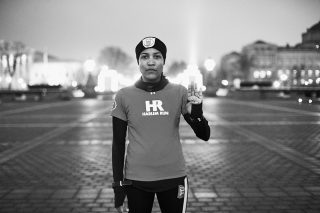
 Alison Desir ran 240 miles from Harlem, N.Y., to Washington, D.C., in time for the women’s march in an effort to raise money for Planned Parenthood. Photo: Courtesy of Alison Desir
Alison Desir ran 240 miles from Harlem, N.Y., to Washington, D.C., in time for the women’s march in an effort to raise money for Planned Parenthood. Photo: Courtesy of Alison Desir
As she ran through the cold, inky darkness that makes up a January evening in the Mid-Atlantic, Alison Desir had one thought on her mind: making it to Washington, D.C., in time for the women’s march. Along with three other women, Desir was leading the 240-mile run from Harlem, N.Y., to the nation’s capital in an effort to raise money for Planned Parenthood—worried the incoming administration would pull funding for the organization.
Desir was tired. But the slight 32-year-old was also energized. Media attention was spreading the news about Desir’s efforts, and throughout the three-day journey, supporters stepped up to donate money, food, and run alongside her Run4AllWomen team. By the time they reached the steps of the U.S. Capitol, Desir’s team had raised over $100,000, far more than the original goal of $44,000.
When she had a chance to catch her breath and reflect on the snowball she had set in motion, Desir knew there had to be a next step. The only question was, what?
“Everyone kept asking, ‘what’s next?’” Desir says. “We had all this excitement and I realized our work had just begun.”
The solution, Desir determined, was to take all that energy and harness it for continued momentum. In April, she took step two in that plan and held a Run4AllWomen Summit in New York. Attending the summit were 23 new, handpicked ambassadors ready for action.
 As part of the Run4AllWomen Summit in New York, the 23 ambassadors did an “art run” through Harlem. Photo: Myles Gaymon
As part of the Run4AllWomen Summit in New York, the 23 ambassadors did an “art run” through Harlem. Photo: Myles Gaymon
“We learned a lot on our run to D.C.,” Desir explains. “We decided that we needed to develop best practices from that experience and transfer those skills to a network of women.”
By harnessing social media, Desir’s call for a team of women to carry on the Run4AllWomen mission spread quickly. Potential ambassadors applied for the job and then Desir picked those best suited for the intended tasks.
Charlotte Walsh, 50, owner of Boston’s Charles River Running, was among those who applied and was accepted to the ambassador program. She learned about it via a Twitter post and became intrigued.
“The run to D.C. was so inspiring and motivating for women like me feeling stressed about the election and its potential fallout,” she says. “I kept tabs on what Alison was up to following the run and when she made the call for ambassadors, I decided I wanted to be a part of that.”
Once accepted into the program, Walsh joined her ambassador sisters for the training session in April. The day began with an “arts run” through Harlem, serving both as inspiration and a bonding experience for the women. Together they screened a film about the January run. Then the ladies got down to business and began training for the next steps.
 Alison Desir and fellow ambassadors took part in discussions at the summit on next steps for the Run4AllWomen movement. Photo: Johnathan Martinez
Alison Desir and fellow ambassadors took part in discussions at the summit on next steps for the Run4AllWomen movement. Photo: Johnathan Martinez
From the summit it was decided that the brand ambassadors, who hail from all over the country, will organize their own, local runs to regional Planned Parenthood offices during the second weekend of August. The idea, says Desir, is that running provides a powerful tool for grassroots activism. “There’s empowerment through fitness,” she says. “And we want to elevate the conversation on women’s rights.”
Desir designed the program around four guiding principles:
We engage in grassroots activism in our daily lives
We seek to empower others through fitness
We foster alignment within our communities around a common goal
We resist the status quo and work tirelessly to advance the conversation around women’s issues.
At the summit, all 23 ambassadors learned how to use running for activism, received specific logistics and planning tools, and fundraising advice. “It’s a daunting task,” Walsh admits, “but that’s part of what appealed to me, especially at a grassroots level.”
Desir says that with this second, bigger effort, she is launching a more intentional movement. “We trained the ambassadors on how and why to tailor the runs to their communities,” she says. “We are united in the common cause to allow access to safe, affordable healthcare.”
 Alison Desir, Photo: Johnathan Martinez
Alison Desir, Photo: Johnathan Martinez
Walsh says that the outreach and fundraising takes her out of her comfort zone, and she likes that. “The beauty of it is that we aren’t soliciting corporate sponsorships but touching our communities and forming relationships,” she says. “It’s kind of like a flash mob for running.”
Each ambassador is responsible for designing her own plan and then submitting it to Desir for feedback before launching into action in August. “In many ways, this effort brings us back to what running is all about,” Walsh says. “There’s no charge, no shirt, no bling to participate. It’s just connecting with other runners.”
For her part, Desir never could have imagined that what started as a quiet effort to make a difference in January would turn into such a widespread movement in August. She admits that it has taken over her life. “I had no idea this would happen,” she says. “I’m just happy and privileged to have the resources to use for something like this.”
RELATED: Meet The Women Who Started The Mother Runner Movement
The post Run4AllWomen Movement Takes the Next Step After Women’s March appeared first on Competitor.com.
Do The Shoes You Wear While Not Running Matter?

The way you treat your body during every moment of the day counts. There is the stress of sitting for eight hours at work all the way to the hard pounding when just walking on the pavement. Everything you do with your body—what you eat, how long you stand, how well you sleep—adds up.
We think a lot about the shoes we wear when we run. But the shoes we wear for the majority of our day are often an afterthought. No matter how great your supportive running shoes are at correcting, you can’t undo the damage of a day of improper alignment.
Wearing high heels can shorten the muscles in your calves and your back. This leads to pain and muscle spasms, according the American Osteopathic Association. In heels, your toes are pushed into the front of your shoe. This causes your toes to cramp and take on extra pressure. You can cause nerve damage and even loose toenails.
Try rotating in a pair of flat shoes with soft insoles into your daily wear. You can also stretch your leg muscles throughout the day. Some exercises include picking up a pencil with your toes or doing a calf stretch against a wall.
So, before you blame your running shoes for your joint pain, assess all the stressors you put on your body throughout the day—including your regular shoes!
RELATED: How to Buy Your Next Pair of Running Shoes
The post Do The Shoes You Wear While Not Running Matter? appeared first on Competitor.com.
Hotels Get Creative To Help Guests Stay Fit While Traveling
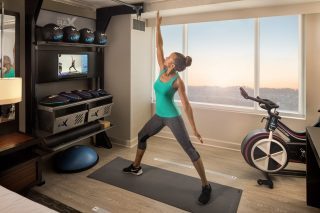
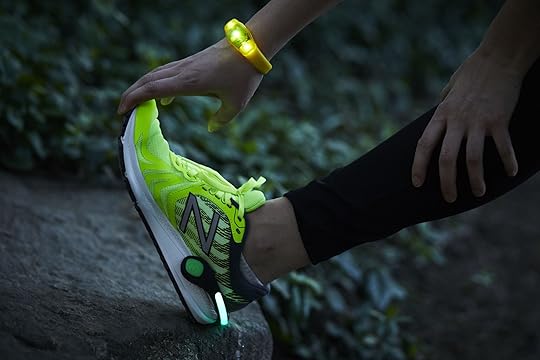
Staying consistent with a running or workout routine while traveling can be tough. Whether a trip is for work or for pleasure, a change in schedule can throw off even the most rigid of fitness fanatics. However, two hotel chains are doing their best to promote the ease and availability of exercise with their guests.
Westin Hotels Partners with New Balance and Peloton
Westin Hotels recently interviewed guests worldwide in an effort to understand their fitness habits. They found that 25 percent of respondents are most in control of their exercise routine while traveling if they work out between 4:00 a.m. and 6:00 a.m. Additionally 45 percent of those polled said they intend to run while traveling.
Because many guests were early risers, Westin has added safety elements to their successful Gear Lending Program. Guests can now rent reflective wristbands and light up sneaker clips, along with New Balance apparel and shoes, for $5. Run Concierges at each hotel provide guests with maps of runner-friendly routes in the area. All of this is intended to help travelers stick to their before sunrise routine while staying safe.
RELATED: 7 Essential Pieces of Gear For Traveling Runners
“Whether at home or on the road, often the only time guests have for themselves is the morning, said Brian Povinelli, SVP and Global Brand Leader of Westin Hotels & Resorts, in a statement. “Fueled by our guests’ passion for running and the brand’s promise to empower travelers to move well, we hope this extension to our Gear Lending program will inspire travelers to rise early and own their morning.”
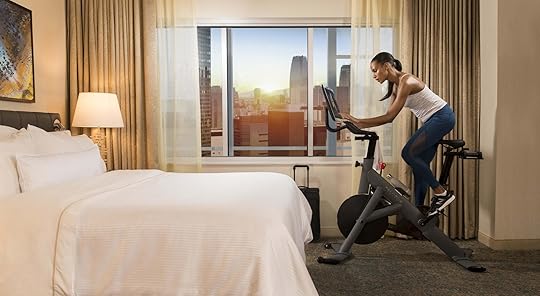
In addition, Westin has also partnered with Peloton, makers of indoor stationary bikes with streaming access to live and pre-filmed spin classes. Guests can either ride Peloton bikes in WestinWORKOUT fitness centers or book a room with a bike in it. Both options are only available in select hotels right now, but Westin is hoping to expand the partnership throughout the year.
Hilton Hotels Change In-Room Fitness
Hilton Hotels have also found that their health-conscious guests were more likely to work out when access to equipment was convenient. They partnered with Aktiv, a company specializing in fitness facility design and supply, to create an in-room exercise experience called “5 Feet to Fitness.” The hotel chain wanted their guests to have multiple workout options in the privacy of their own space.
![Hilton_Five Feet to Fitness Room_Yoga[1][1]](https://i.gr-assets.com/images/S/compressed.photo.goodreads.com/hostedimages/1497559554i/23037444._SX540_.jpg)
“The challenge for everybody, no matter if you’re a competitive athlete or just a road warrior, is that people need to find convenient and accessible ways to exercise,” says Aktiv CEO Brian Green.
With that in mind, Hilton and Aktiv strived to pick equipment that was functional and familiar to a majority of guests. The fitness area also takes up as little space as possible. They also kept in mind that many guests didn’t have the time or the desire to go to a common fitness area, especially when traveling for work.
RELATED: Why You Should Plan A ‘Runcation’ (And Travel Tips for Runners)
“The basis is first getting the right exercise balance and really being mindful of space,” Green said. “There are a lot of people less comfortable with exercising publicly. You’ll get the form right. You’ll have the space to do it in and you don’t have to leave the guest room.”
These fitness rooms come outfitted with equipment such as medicine balls, SandBells, a BOSU ball, and a bike. The storage for all of these tools is compact, only taking up a few feet of space. Five Feet to Fitness is centered on an in-room kiosk that acts as a virtual trainer. Choices of workouts are extensive and include yoga, spin, high-intensity intervals and even foam rolling. The virtual trainer is meant to provide clear instructions. It even gives instant bio-feedback when paired with wearable tech.
“We have created a system for guidance in the room,” notes Green. “You don’t need to be a workout expert. You don’t need a personal trainer. Guests just need to roll out of bed and decide what type of workout is appealing to you.”
Currently the Five Feet to Fitness rooms are only available in San Francisco and Tysons Corner, Va. However they are coming soon to Atlanta, Austin, Chicago, Las Vegas, New York and San Diego.
RELATED: 6 Top Tips For Traveling While Running
The post Hotels Get Creative To Help Guests Stay Fit While Traveling appeared first on Competitor.com.
5 Moves Make Up This Effective At-Home Boxing Routine
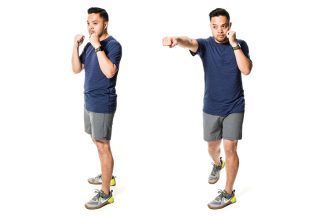
You don’t have to be the fighting type to get a kick out of an at-home boxing routine. This workout packs a powerful punch, enhancing dynamic flexibility, balance, coordination, strength and power. Best of all, you don’t need a partner to spar with or even a pair of fancy red boxing gloves.
Research on boxing-related interval training demonstrates that this sport’s workouts burn body fat and improve blood pressure numbers above and beyond traditional moderate cardio. Similar to other interval-type workouts, this at-home boxing circuit calls you to stick with each move for one minute before moving on to the next. After you finish all five, take a one-minute rest and repeat the circuit three to five times.
RELATED: At-Home Assessments Aimed At Improving Performance
Warm up with 10 minutes of easy jump roping. If you don’t have a jump rope on hand, simply mimic the jumping motion to get your muscles moving and blood pumping.

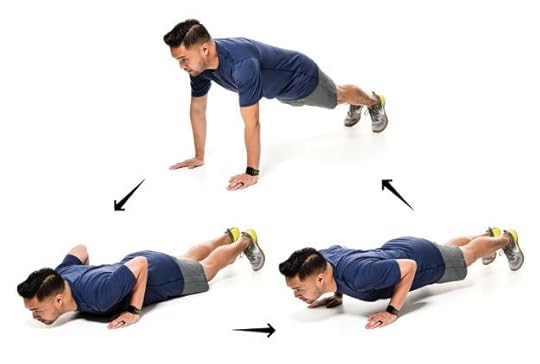
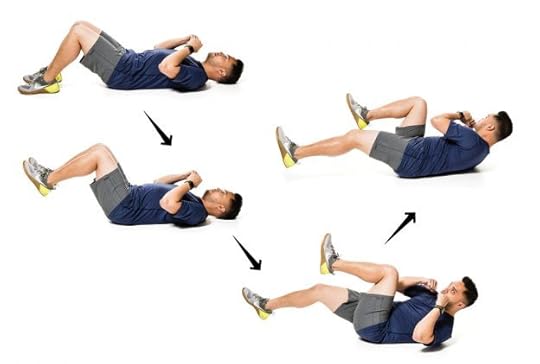
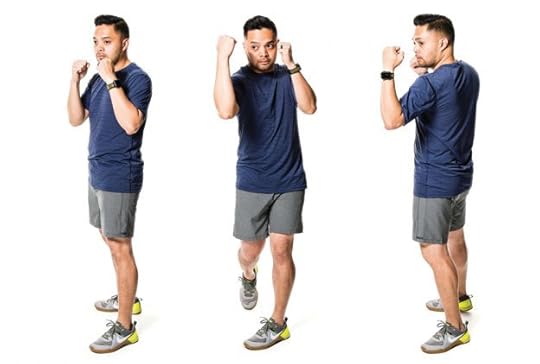
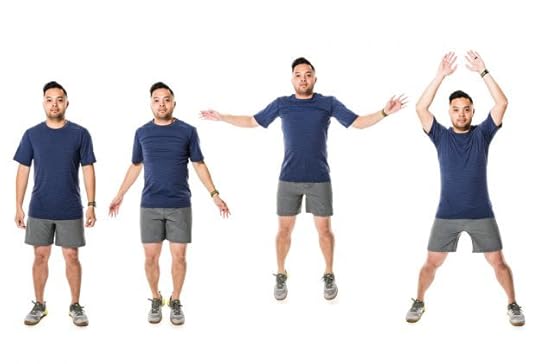
The post 5 Moves Make Up This Effective At-Home Boxing Routine appeared first on Competitor.com.
Our Favorite Red, White And Blue Themed Running Gear
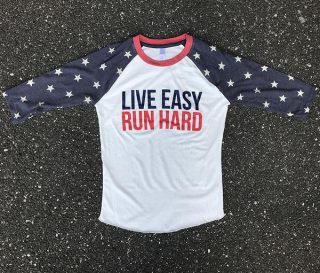
Between Memorial Day and Labor Day, summer is filled with holidays where you can rock red, white and blue. Luckily many brands making patriotic gear options for runners. There are plenty of ways to wear stars and stripes during and after a run—there is even a racing cape! Check out our favorite flag-themed running gear below.
RELATED: 6 Strategies For Safe Summer Running


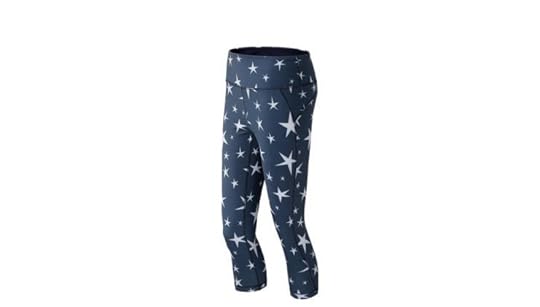

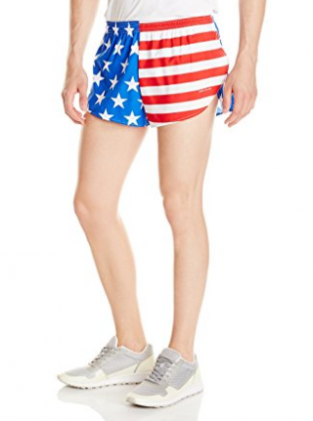
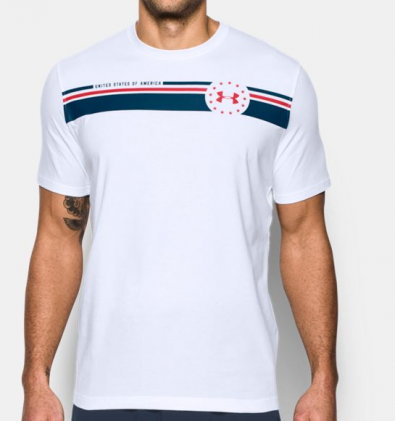
The post Our Favorite Red, White And Blue Themed Running Gear appeared first on Competitor.com.
The 5 Benefits of Beach Running
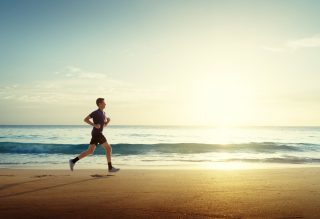
It sounds pretty idyllic. Sun, a nice ocean breeze, and the melodic sound of waves—the perfect backdrop for a run, yes?
But maybe not if you’re actually running on the beach.
As soon as you strip off your shoes and start striding on the sand, you realize one thing right away—running on the soft sand isn’t as easy as the Baywatch lifeguards make it look!
However, don’t let that stop you from taking your workout to the beach. Running on sand offers many benefits that can ultimately help you become a stronger and faster runner.
Less Impact
When you run on the beach, your foot lands on a surface that shifts beneath you. As a result, this creates a “softer” surface for your foot compared to pavement. That means your lower body (think ankles, knees, and hips) is subject to less pounding and stress when you run.
Strengthens Your Weak Links
Sand creates an unstable surface for your foot. In order to stabilize yourself during your beach run, your body is forced to use the smaller muscles in your lower body, particularly in your foot and ankle. For most runners, these muscles can be weak because we don’t have to use them as much when we run on paved roads. By strengthening these stabilizing muscles on the beach, you guard yourself against potential muscle imbalances and injury.
RELATED: 3 Summer Beach Workouts for Runners
Resistance Training with a View
If you’ve ever walked, let alone run in the sand, you know that it takes a lot more effort to firmly plant your foot and then to propel your legs forward. That’s because your foot is working against a soft surface with more “give” than a harder surface. This forces you to engage the muscles in your lower body more. Next time you’re due for a lower body strength training session, head to the beach and tackle the sand dunes!
Burns More Calories
If you haven’t guessed by now, the extra effort and muscle engagement required to run on the beach means that it burns more calories compared to running on pavement. In fact, studies have shown that running on sand requires about one-and-a-half times more energy compared to running on a hard surface.
Beautiful Views and a Change of Pace
Change is a good thing. Changing training surfaces, routes and routines is not only good for you physically, but it’s also good for you mentally.
While beach running can help to make you a stronger runner, don’t dive in too quickly. As with anything new, it’s best to ease your way into running by the ocean if you aren’t accustomed to it. There is a risk of injury, especially ankle sprains, Achilles injuries and aggravating your plantar fascia.
Take it slow, starting with a light 10-15 minutes at a time. Start by running at low tide on the hard, packed sand by the water’s edge. This will give your leg muscles a chance to get acclimated to the extra work required. And wear shoes. Not only can there be lots of different debris lying on the beach, but shoes will also help your feet get used to the new surface.
RELATED: 9 Races with an Amazing Ocean View
The post The 5 Benefits of Beach Running appeared first on Competitor.com.
June 13, 2017
Ultrarunner Kaci Lickteig Aims for Second Consecutive Win at Western States
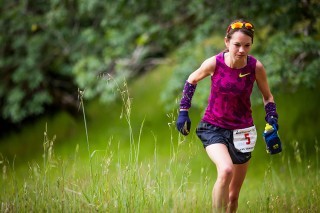

Her first year running Western States in 2014, Kaci Lickteig finished in 6th place. Photo: Derrick Lytle
As Jason Koop sees it, Kaci Lickteig isn’t the most talented runner at this year’s Western States 100-Mile Endurance Run. Her 2:44 marathon PR is good, but not great. Others have her beat by 12 to 15 minutes. In college, she wasn’t a standout for her Division III team, which she made as a walk-on. When she began running ultras five years ago, her resume didn’t scream “future star.” Plus, she lives and trains in Omaha, Neb., hardly the cradle of mountain trail running.
Yet Koop, who has coached Lickteig since 2014, says she’s smart, tough and adaptable. Her sum is far more than the parts.
“What Kaci is able to do is really put the complete package together,” he says. “She takes every ounce she’s been given and manages a race very well.”
Lickteig proved her racing abilities in 2016, winning Western States on her third try in 17 hours, 57 minutes and 59 seconds, the fourth-best time by a woman since the inception of the storied race in 1977. The victory was the highlight of a terrific 2016 season, in which she won seven of her eight races of 50K or longer. Among her victories were the Bear 100-Mile Endurance Run in Utah and two 50-milers. She also earned the female Ultrarunner of the Year Award from Ultrarunning Magazine.
After battling injuries and illness throughout 2014 and 2015, Lickteig entered last year’s Western States healthy, fit and eager to win a race she’s wanted to win for years. Even though temperatures were in the 90s, Lickteig says everything clicked.
She hadn’t intended to take an early lead, yet found herself up front with Devon Yanko for the first 15 to 20 miles. She kept it up, grinding up and down the steep terrain en route to the finish line in Auburn, Calif. Lickteig didn’t think she had won until she crossed No Hands Bridge over the American River with a sizable lead and three and a half miles to go. She finished 14th overall, almost an hour ahead of runner-up Amy Sproston.
“The effort felt so manageable and it felt natural to be there,” Lickteig recalls of her early lead. “I just continued and never looked back. It was just one of those dream days.”
The “Pixie Ninja”
Lickteig, 30, has one of the best nicknames in ultra running. At 5-foot-3 and about 95 pounds, she is the “Pixie Ninja,” a tag applied by her Nebraska running buds years ago. It’s a name she likes, and it suits her. She’s an assassin on the course, yet is energetic and upbeat, a person who aspires to be happy whether she’s running a race, working as a physical therapist or hanging out with her two dogs, friends and family.
Lickteig believes finding happiness on the trails has been one of the keys to her success.
“If I run happy, I run well,” she says.
In any 100-mile race, there will be hard times and pain. However, Lickteig tries to exorcise negative thoughts. She focuses on the scenery and the fact she’s getting to do what she craves. She fell in love with ultras because she enjoys pushing her body through barriers. The longer the races, the better.
“I think a lot when I run,” she says. “I really take in everything around me, my surroundings, being happy about being out in nature, looking at the trees. I just feel free and alive when I’m like that. I feel like a little kid again when I used to go exploring. Just having that purity of being out there is what makes me happy.”
Koop says it’s a reflection of who she is. “She’s able to maintain that personality—that happy go lucky, I’m a happy person, I’m a happy runner—in the face of the rest of the environment, which is quite hard, right?” he adds. “It’s a 100-mile race, it’s super hot, it’s really competitive and there’s a big spotlight on it, but she’s able to be true to herself and her personality.”
Lickteig’s victory at Western States in 2016 was also the result of her evolution. In 2014, she ran 20:07:10 in her Western States debut, finishing sixth among women and 40th overall. In 2015, she was the second woman (24th overall) in 19:20:31. That first year, she hadn’t understood what she was up against.
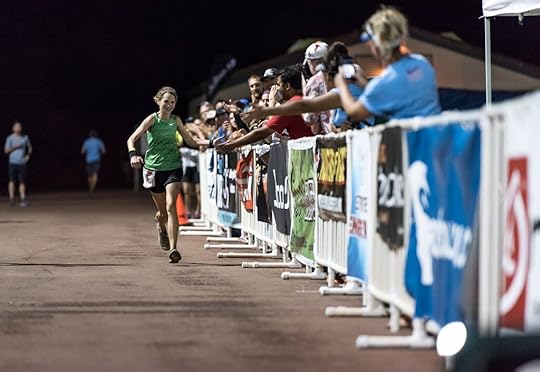 Second-place finisher Kaci Lickteig high fives spectators on her way to the finish line at the 2015 Western States 100. Photo: Matt Trappe
Second-place finisher Kaci Lickteig high fives spectators on her way to the finish line at the 2015 Western States 100. Photo: Matt Trappe
“I was way naïve about the race and how much the downhills were going to affect me,” she says. “The race destroyed my quads by mile 40 and I had a really bad last 60 miles.”
From that, she learned she’d have to control her gait on descents and “not get sloppy.”
PHOTOS: 2015 Western States Endurance Run
Last year, too, she was determined to run under control until she reached Forresthill, past the halfway point, where she picked up her pacer. Feeling strong, she was able to “race more” over the final 40 miles. She stayed hydrated and as cool as possible and kept the positive mantra.
“If I had any negative thoughts, I hurried up and changed my thought process,” she says.
Her Hero
Ahead of this year’s Western States Endurance Run on June 24, Lickteig says she’s injury free and fit. She’s running about 100 miles per week and feeling strong. She’s aiming not only for Western States, but her first international race, the Ultra-Trail du Mont-Blanc (UTMB), a 100-plus miler through the Alps—traversing through France, Italy and Switzerland—in August.
“It’ll be more of an experience for me to get my feet wet on different terrain, a much harder mountain,” she says of her preparations for UTMB.
Although Lickteig has been busy training for a big 2017, her thoughts often drift to her grandmother.
June Cords, 79, raised Lickteig and remains close to her. The two talk on the phone daily. Now Cords is battling cancer. Lickteig calls her grandmother her hero, and recently posted a video of her on Twitter, as she celebrated the completion of a recent round of treatment. Lickteig’s voice breaks as she talks about her.
Lickteig, who can run 100 miles over mountain passes and ignore pain with a smile on her face, says it’s her grandmother who is the champion in the family, and her inspiration.
“Her body’s weak, but she’s strong inside and she’s fighting so hard,” Lickteig says. “She’s such a fighter, it makes me want to be the best I can be. Nothing I go through will ever compare to what she’s going through right now.”
RELATED: 72-Year-Old Has Unforgettable Finish at the Western States 100
The post Ultrarunner Kaci Lickteig Aims for Second Consecutive Win at Western States appeared first on Competitor.com.
How To Find The Right Running Coach For You
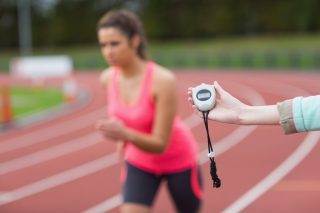
So much coaching information can now be found online. A simple Google search is all one needs to find a training plan for any race distance. As someone who has gone through the accreditation process, it’s not difficult to become a running coach. Everyone can have coaching credentials these days. It makes you wonder—are coaches even worth it?
Sure, athletes can find their own information online. However the difference is that the information found online is not tailored to the specific needs of an individual athlete. It’s not a personalized program that has been created to fit your goals.
If your training is going well without a coach, now might not be the time to invest. But if your training has plateaued and you would like to get to another level, getting some help is always a good investment.
If you are in the market for a coach, here are some ways to get the most bang for your buck:
Shop local
A local coach is your best bet. While any personalized attention is better than a cookie cutter training plan, having someone to meet with locally can help many runners. There are different ways to find a local coach. Visit a local running store or stalk a track. Ask around at races because coaches could have athletes running or run themselves.
Visit RRCA.org
Your coach should be certified. With so much information available on the internet, it is important to find a coach that has the credentials to give you a training plan. Without credentials, you could end up injured or running personal worsts.
RELATED: Do You Need a Running Coach?
Interview possible coaches
If you cannot meet face-to-face with coaching candidates due to distance, then Skype or talk on the telephone. If you are paying someone, it is a job. So treat meeting with a potential coaching candidate as an interview. Don’t be afraid to ask questions. Ask about their training philosophy and don’t be afraid to say no to anything that doesn’t fit your lifestyle. If you aren’t comfortable with a coach at first, it won’t be magically better the next time. Instead, it will end up as a waste of money.
Research
Similar to dating, don’t assume every coach is the same. Each coach is going to have a different style, philosophy and training program. Some coaches focus on increasing mileage, while others on increasing pace. Some integrate a lot of cross-training. Coaches all charge different costs, so don’t be afraid to ask about pricing.
At the end of the day ask yourself, “Why do you want a coach?” People hire coaches for multiple reasons. Do you want to PR at a race, get into shape, or stay consistent with their training? If you think a coach can you help, hopefully these methods can help you locate the perfect one for you.
RELATED: 3 Keys To Effective Group Training
The post How To Find The Right Running Coach For You appeared first on Competitor.com.
Facebook Groups That Can Actually Save Runners Money

Many runners, obstacle-course enthusiasts and endurance athletes are looking for ways to make the sport more affordable. Race discount codes, product giveaways or connecting with other runners for housing can really help to offset our costs. We found three legitimate Facebook groups that can help runners save a little cash.
Discount Codes for Races Facebook Group
This group is a place for athletes to post and request public discount savings codes for races and endurance events. Many of the discount codes posted are offered directly from the race organizers. The group does not allow members to post private codes, non-race fee discounts, virtual races, or offers to sell or buy race bibs.
#RunnerGiveaways Facebook Group
This group is a place where running and fitness bloggers post giveaways and contests for free items offered through their blogs. Giveaways posted often include free race entries, endurance products, clothing and gear, personal care items and more. (Contest/giveaway rules vary by blogger.)
You can also check Twitter for the #runnergiveaways hashtag for more offers.
Runner Room Trade/Share Facebook Group
Many people already find a spare bed or couch to stay at for a race through community sites like Couchsurfing.com. This group was developed specifically for runners who are willing to host others before events. It also helps people who are trying to find others to share hotel rooms to save money.
Running Items For Sale
Those shoes that don’t quite fit right. That pair of shorts with the tags still on it. Now you can find a new home for the running items you barely use. And you can make a little bit of money back for them. This is also a great place to purchase second hand gear at a discounted price from fellow runners.
RELATED: The Best Watches For Every Runner Budget
The post Facebook Groups That Can Actually Save Runners Money appeared first on Competitor.com.
This June Marathon Is Still Clearing Snow From Their Course

The Leadville race crew is working overtime clearing miles of snow off the course in time for the race on June 17. Photo: Courtesy of Leadville Race Series
By June, most athletes are bemoaning the rise in hot summer temperatures that affect their workouts. However, runners in Colorado are still clearing snow from their path. In fact, there was so much that they could even ski as of last weekend.
Due to late season snowfall in the Rocky Mountains, the organizers of the Blueprint for Athletes Leadville Trail Marathon and Heavy Half Marathon are still shoveling out trails to prepare for race day. Their crew will have to clear snowdrifts in some areas that are up to seven feet high. With daytime temperatures ranging from high 60’s to low 70’s, the crew is often surrounded by snow while wearing short sleeves.
The June 17th race kicks off the ultramarathon season in Leadville, Colo. It is the first event in the Leadville Race Series. The trail marathon also acts as a qualifying race for the prestigious Leadville Trail 100 later this summer. The popular ultramarathon has a lottery entry system, making the qualifying slots highly coveted. Since the Leadville Trail Marathon is an important first step in a season of ultra racing, crews are working overtime to ensure that the course is ready to go.
“With the May storms this year, we’ve received a considerable amount of late season snow in Leadville. Our team has been working hard shoveling and clearing the snow away for our participants to give them the great race experience Leadville is known for,” said Ken Chlouber, Founder of the Leadville Race Series in a statement.
The Leadville Trail Marathon and Heavy Half Marathon, which is actually 15.5 miles, climbs to an elevation of 13,185 feet. The technical course is not for beginners. However, organizers call it “perfect introduction for those looking to attempt other ultra-endurance events” later in the season. The five-event Leadville Race Series will run from June through August.
RELATED: The Many Layers Of Ultrarunning Star Anton Krupicka
The post This June Marathon Is Still Clearing Snow From Their Course appeared first on Competitor.com.
Ryan Hall's Blog
- Ryan Hall's profile
- 21 followers



